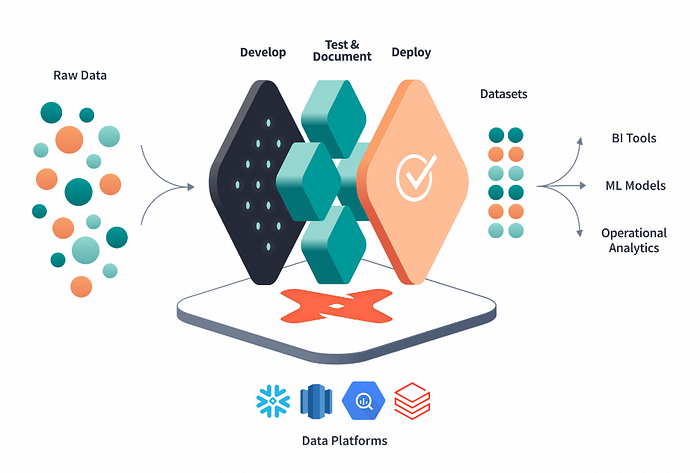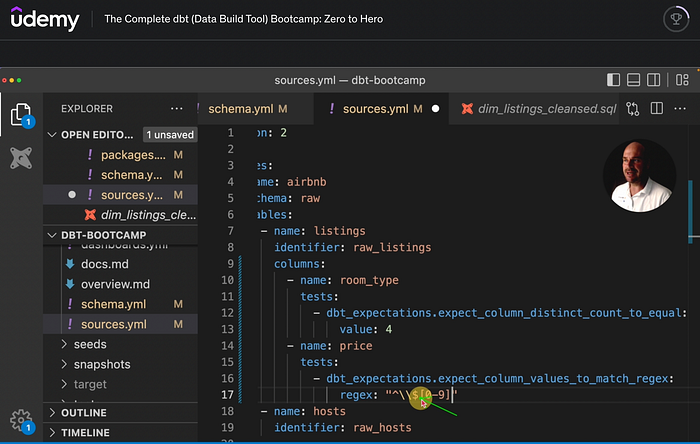Boost your dbt tests using Great Expectations in dbt
The Data Build Tool (dbt™) made a hit as the central component of the modern data stack in the past years. It has been gaining traction ever since, and it has done this for a reason: it’s easy to use, doesn’t require any programming skills besides SQL, and is an exceptionally focused tool. It helps you build, run, document, and test SQL-based data pipelines. Obviously then, this is a tool that we should learn more about!

dbt Testing Basics
dbt offers three types of tests: singular, generic, and custom generic tests.
Singular Tests
You implement a singular test in the form of a SQL expression, and as a general rule, they should return the number of failing rows. If a singular test returns zero records, it passes.
Take the example of working with a user table that has an age column. Now, as the oldest person alive is less than 125 years old, it’s safe to think of age 125 as a maximum accepted value in the age column of a database table.
Translating this into a singular test would look like this:
SELECT COUNT(*) FROM {{ ref('users') }} WHERE age NOT BETWEEN 0 and 125 Generic tests
dbt supports four generic test types: not_null, unique, relationships, and accepted values.
These tests are straightforward to implement, as you can add them to the models’ definitions (such as schema.yml).
models:
- name: dim_listings_cleansed
description: Cleansed table which contains Airbnb listings.
columns:
- name: listing_id
description: Primary key for the listing
tests:
- unique
- not_null
- relationships:
to: ref('listings')
field: idCustom Generic Tests
You can convert a singular test into a generic test using the testmacro. Just put the following code into a file under the macros folder, and you’ll be able to use your age validation test as a generic test right away:
Now you’ll be able to use valid_age as a generic test:
models:
- name: users
columns:
- name: age
description: User age
tests:
- valid_ageAdvanced testing with dbt-expectations
dbt-expectations is a dbt package inspired by the Great Expectations project, so let’s cover Great Expectations first.
Great Expectations

Great Expectations is among the most popular open-source projects for data-pipeline testing available today. It supports up to 300 expectation definitions (a.k.a. tests). If you want to look for outliers, regulate the number of values of a categorical variable, or test geocoordinates, Great Expectations probably has a test for it you can use. Now, many of its tests are available in dbt, too!
dbt-expectations
dbt-expectations — a project inspired by Great Expectations - implement many Great Expectations tests for dbt.
dbt-expectations is extremely simple to install when you want to test your data; add these lines to the packages.yml file in your dbt project folder:
Once you’ve set up the project definition, install the package using the following command:
dbt deps When dbt-expectations is installed, you’ll have access to a plethora of tests. Some of the tests I like the most and the ones I cover in my courses are:
- expect_column_values_to_match_regex: Validates a value against a regular expression.
- expect_column_values_to_be_within_n_stdevs: Guards against outliers in a column.
- expect_table_column_count_to_equal_other_table: Makes sure that a transformation (like a data cleansing step) doesn’t change the shape of the source table.
dbt-expectation Tests in Practice
You can use dbt-expectations as generic tests. Some of these tests work on individual columns, such as expect_column_values_to_match_regex, while some others test whole tables such as expect_table_column_count_to_equal_other_table.
An example of a real-world models.yml file I’ve created for my online dbt course will show you how to use these in practice:
Want to learn more?
Don’t just take my word for it. I obviously think dbt is a fantastic tool and should be used by as many people and companies as possible. So come and check out my course on Udemy called the Complete dbt (data build tool) Bootcamp: Zero to Hero!

In this course, we start learning dbt from scratch through a real-world example of Airbnb data and go through both the theoretical and practical aspects of dbt, such as:
- models and sources
- slowly changing dimensions
- advanced testing and test debugging
- documentation
- lineages
- and dashboards, to name a few.
If you sign up through this link today, you’ll get the largest discount Udemy lets me give to students.
Happy dbting!
dbt Mark and the dbt logo are trademarks of dbt Labs, Inc.
